Features
Reminiscence of Peradeniya Campus in the Sixties
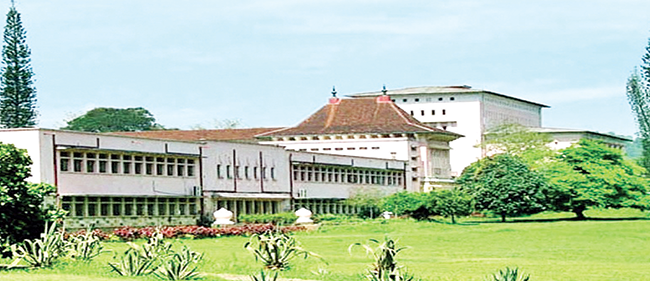
by Prof. R.P. Gunawardane
A very interesting article, ‘Ceylon’s first university in memory and imagination’, by Ernest Macintyre in The Sunday Island of 12 February 2023 describing the life at University of Ceylon, Peradeniya Campus in fifties prompted me to write about the life at Peradeniya Campus in the next decade, the nineteen sixties.
Macintyre has elegantly described the life at Peradeniya Campus in the early years after its establishment in 1952. At the time only the Faculty of Arts and Oriental Studies was functioning at Peradeniya. The other faculties were established later in the early sixties.
In the sixties there were five faculties on the Peradeniya Campus— Arts, Medicine (including Dental Surgery division), Agriculture (including Veterinary Science), Science and Engineering.
Most students were accommodated in halls residence. For boys the Jayathilake, Wijewardana, Arunachalam, Mass, James Peiris, Marcus Fernando, Hilda Obeysekera and Akbar-Nell halls were available. The Ramanathan and Sangamitta halls were available for girls at the time. However, when the number of girls entering the university increased in subsequent years and due to other reasons, the Hilda and Wijewardana halls were converted into female hostels.
At the time, all food and laundry services were provided by the halls. The hall fee was only about Rs. 250 per term (for about three months). Food was excellent with nicely arranged tables serving breakfast, lunch, evening tea and a superb dinner. At the time we used to get fried rice and chicken curry for lunch on Sundays, even the visitors were allowed to enjoy food in halls.
In the sixties most of the elite as well as other well to do students in and around Colombo entered the University of Ceylon, Colombo Campus for convenience and also to remain in the Colombo environment. On the other hand, the outstation students mostly from the south and the north and also from the east and the Central Province including plantation sector all entered Peradeniya campus. In the south, most of the students came from Galle and Matara districts. Most of them except a few very rich ones who came with their parents in private cars, travelled to Peradeniya by train and by bus.
I remember travelling by the train, Ruhunu Kumari, from Weligama railway station to proceed to Peradeniya on 4 October 1965. I had nobody to accompany me because both my parents were dead. I was joined by several senior students who entered the university previous year from my school at the Galle Railway Station and travelled with me to Peradeniya. In fact, a friendly low-key form of ragging started in the train itself asking various funny and interesting questions by some seniors. We changed trains in Colombo Fort to Udarata Menike and got off at Kadugannawa. Udarata Manike goes to Nanuoya via Kadugannawa and it does not run to Kandy via Peradeniya. We had to travel to Peradeniya by bus from Kadugannawa and it was fortunately a short journey.
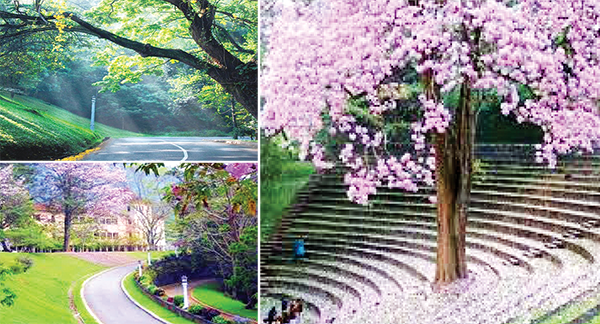
There was no body to receive us at Peradeniya and the university had not organised any vans to take us to the halls as in the 1950s described by Macintyre in his article. We had to carry our bags and walk to the halls. My senior friends from our school helped me carry my bags to Jayathilake hall. Since I had visited the Peradeniya campus previously in April the same year for my practical exam, I was familiar with the area and it was easy for me to reach the destination.It was very convenient to stay in Jayathilake hall because all my classes were held in the Faculty of Science, situated just opposite Jayathilake hall on the other side of the Galaha road.
The Peradeniya campus was huge with about 700 hectares of land. On one side we could see the Hanthana mountains and on the opposite side the longest river in the country, the Mahaweli.Although some blame the change of language policy for the lowering of standards in the university, this claim cannot be justified. This change of policy gave tremendous opportunities to many deserving rural and underprivileged students across the society in all the communities – Sinhala, Tamil, Muslim and all other minority communities to enter the seats of higher learning. Most of them picked up so fast and became fluent in English.
In the science stream, (all sciences including medicine engineering, etc.) students had to change over to English medium at GCE A/L or in the first year at the university. This transition was not easy but most students managed to get over difficulties.
Peradeniya was a paradise for youngsters awaiting to enjoy life away from home and for lovers who found partners on the campus. A fair number of students found their partners during the first year. Some others waited for the new train to arrive – the next year batch! There were some who were very shy and avoided these opportunities to meet partners. I believe they waited for their parents to find the partners at the appropriate time! Some say they missed the bus. Some found partners in the same faculty easily while there were many interfaculty couples at the time.
There were many opportunities to meet partners on the campus. Parties and dinners in the halls; badminton and volleyball matches were organised by various groups in the faculties, halls of residence and sometimes outside the campus in Kandy and Botanical Gardens, Peradeniya. My friend Wije, a medical student from my hometown, found his girlfriend at Hilda Hall. His family is now living in England.
My girlfriend in the school in Galle (later my wife) entered the Medical Faculty of the Peradeniya University the following year and joined me. We fully enjoyed the campus life.
We used to have regular parties in and outside the campus. I can very well remember a party held after selection to follow a Special Degree in Chemistry in 1966. We held the party in the Botanical Gardens with all kinds of drinks including beer and arrack and food. Most of the boys were drunk at the end of the event and some were carried to their halls of residence!
The city of Kandy is only four miles away; bus fare was only 25 cents, and red Mercedes Benz buses were shuttling between Kandy and the campus. The journey took about 15 minutes. Many small parties and get-togethers were held in small venues and in restaurants in the Kandy town. I can remember going to Chinese restaurants along Dalada Veediya and Lyons Café near the Police Station. Visits to movie theatres in Kandy were very common with girlfriends. There were four movie theatres in Kandy. The Regal theatre in Mulgampola along Peradeniya road was popular at the time showing Hindi, Sinhala and English movies. University couples were seen in these theatres very often. They had more freedom in these theatres than along the Kissing Bend because darkness in the theatres provided more opportunities to gratify their desires.
Expedition and climbing Hanthana mountain range is again popular on the campus. Couples and groups of students used to do this expedition at least once during their campus life. I did it once with some of my friends only males and a few lecturers also joined, giving us more confidence. It was beautiful scenery and a very enjoyable visit.
During campus life at Peradeniya, most students visited Sri Pada. We also did so once with one lecturer accompanying us. We went by train from Peradeniya to Nanuoya and then took a bus to the base of Sri Pada. We climbed all night and reached the top in the early morning, witnessing the beautiful scenery of the sun rise from the top of the mountain.
The Kissing Bend, the Lover’s Lane, the open-air theatre are very interesting spots for the students and particularly for the young couples. Kissing bend is on the Galaha road just opposite Hilda park after passing the Lodge on the left if one travels towards Galaha from the main campus. In the evening, this bend is dark because of the huge trees around making it easier for boys to kiss their girls. Unfortunately, in later years this road became very busy with too much traffic and pedestrians.
The Lover’s Lane is situated between the Senate, administrative and library building complex and the Mahaweli Ganga. It starts near the Kissing Bend on Galaha Road runs along the bank of Mahaweli. It is a lonely winding road overlooking Mahaweli with minimum traffic or pedestrians giving complete privacy to the youngsters. You see many couples along this path in the evenings. If you need more privacy you may go down to the bank of the river and sit on a rock. You see many couples doing that in the evening. It is also possible to go down to the bank of the Mahaweli river through the Hilda Park. Bank of the river has a number of huge bamboo bushes spread over a long area. One could witness many couples sitting under bushes maintaining privacy.
Dramas and musical shows were held regularly in the Open Air Theatre in Hilda Park. This is commonly known as “Wala”. Every year there is a Drama Festival lasting about one week those days having different very popular dramas like ‘Maname’, ‘Sinhabahu’ in the evenings. Students called this “Wale Sellam” means playing in the hole. This was a very interesting event and many students and the couples including staff members attended these events. Musical shows also were held regularly at the gymnasium inviting famous singers at the time. Pandith W.D. Amaradeva was a frequent visitor those days.
Peradeniya University is a national treasure in this country. Thus, it should be preserved and further developed, maintaining its unique features for posterity.
Features
How the ‘Lost Tribes of Israel’ help in understanding Mid-East peace issues

 Reports that the Israeli authorities have given the ‘go ahead’ for the repatriation and integration into the Israeli populace of some survivors in parts of India from what are described as the ‘Lost Tribes of Israel’, bring up a subject that merits continuous and focused research. The contemporary observer of international politics seeking to understand more thoroughly the factors fueling the Middle East conflict and the crucial role identity issues play in it would, no doubt, be the biggest beneficiary of such research.
Reports that the Israeli authorities have given the ‘go ahead’ for the repatriation and integration into the Israeli populace of some survivors in parts of India from what are described as the ‘Lost Tribes of Israel’, bring up a subject that merits continuous and focused research. The contemporary observer of international politics seeking to understand more thoroughly the factors fueling the Middle East conflict and the crucial role identity issues play in it would, no doubt, be the biggest beneficiary of such research.
In the global South in general there has hitherto been a tendency to soft peddle what may be called ‘the Israeli side of the story’. While the situation of the Palestinians has generated wide-spread empathy for them and very rightly so, an understanding of the causes prompting the Israelis to think and act as they do has gone comparatively unaddressed. This is a glaring lacuna in Southern scholarship in particular on the Middle East question. But if the international community is to pave the way for even a measure of reconciliation in the region the points of view of both sides to the conflict need to be more thoroughly understood.
A news report on page 3 of this newspaper on December 12, 2025 titled, ‘ Israel is moving Lost Tribe Jews from India’, is compulsory reading for those seeking to understand the history of Israel in its essentials. Going by Biblical History in particular the stark truth is that the Israelis were as persecuted as the Palestinians. It could be said that this process began in ancient times even before the birth of Jesus Christ a little over 2000 years ago.
The Old Testament of the Bible is essential reading for an understanding of the history of the Israelis, who are also referred to as ‘The Chosen People of God’. It is a history replete with persecution, mind-numbing war and suffering. The Israelis were continually harassed, subjected to extreme suffering and were displaced from the land they were settled in; which roughly corresponds to today’s Palestinian territories.
The Books of the Old Testament tell us that right through ancient times the Jews, today’s Israelis, suffered displacement, particularly at the hands of the then regional powers, Egypt, Persia and Assyria, and were taken captive to the lands of the conquerors or were reduced to slavery in their own territories. Consequently, displaced Jews escaped to the most distant parts of the world. This is how they happened to be in India as well. However, the fact to note is that the Jews were at one time a settled community with territories of their own.
What is exemplary about the Israeli or Zionist state that was established in 1948, under the overlordship of the old imperial powers, such as Britain, is that it invited the Jews spread virtually all over the world to return to their homeland, the Zionist state. Accordingly, as the report of December 12 reveals, the remnants of the Jewish tribes in India, for example, numbering some 5,800 persons, are being taken back to Israel from India’s Mizoram and Manipur states. Also of note is the fact that the Jews were originally members of 12 tribes, which figure thought-provokingly corresponds to Jesus’ 12 apostles.
According to the news report, these repatriation moves by the Israeli state are not bereft of some strategic motives, such as the strengthening of the Israeli presence in areas bordering Lebanon, for example, which are seen as vulnerable to Hizbollah attacks. The repatriation moves are also interpreted as part of efforts to ‘Judaize’ the Galilean region in particular with a view to reducing the Arab-Islamic presence there, since these areas are also home to a considerable number of Arabs. Since the possibility of friction between the Israeli settlers from India and the Arabs cannot be ruled out, we could very well be seeing the prelude to stepped-up ethnic cleansing exercises by the Israeli state in these security-sensitive border areas.
The larger problem for the international community, given this backdrop, is ‘ where we could go from here’ with regard to making forward moves towards realizing even a measure of peace and reconciliation in the Middle East. The Israeli state is doing well to open its doors to the returning Jewish diaspora readily but given the current power configurations in Israel, transitioning to Middle East peace could remain a distant prospect.
To ascertain why peace remains elusive in the region one would need to factor in that the Netanyahu regime in Israel is of a Far Right orientation. Such regimes usually keep countries internally divided and virtually at war with themselves by exploiting to their advantage, among other things, identity issues. The settlement of persons hailing from ‘Lost Israeli Tribes’ in security-sensitive regions offers the Netanyahu regime the latest opportunity to pit one community against the other in these regions and thereby consolidate its influence and power over the Jewish majority in Israel.
Ethnic-cleansing exercises orchestrated by the Israeli centre take this process to a ‘new high’ and are based on the same destructive reasoning. Basically, the underlying logic is that the Jewish nation is under constant attack by its rivals and should be on a constant war footing with the latter.
Unfortunately the US is at present not doing anything constructive or concrete to further the cause of a fair Middle East peace. Its peace effort in the region has, to all intents and purpose, run aground; presuming that the US was, indeed, intent on pursuing a Middle East settlement. Nor is the US bringing pressure to bear on Israel to make some headway towards some sort of solution. In the absence of these essential factors the Middle East is bound to remain in a state of war.
While it ought to be granted that the Jews have a long history of persecution and victimization, the Israeli state is not doing its citizens any good by keeping these harrowing memories alive for the purpose of power-aggrandizement and by following a policy of pitting one community against the other. While the Jewish legacy of victimhood needs to be abandoned, the Jewish people would be doing themselves immense good by guarding against voting into office Right wing governments that thrive on the ruthless exploitation of identity issues.
Features
Presidential authority in times of emergency:A contemporary appraisal
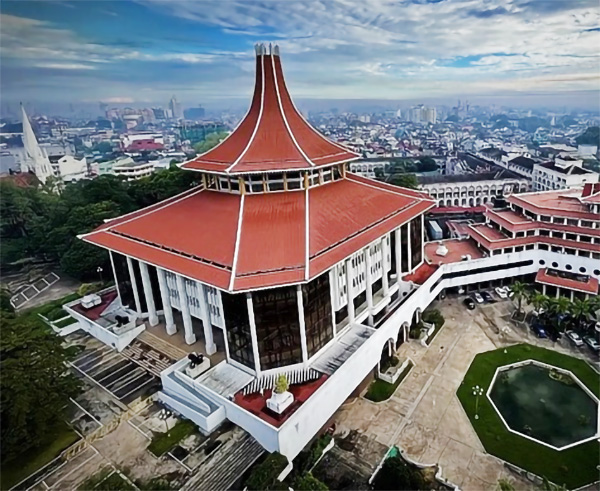
Keynote Address Delivered at the International Research Conference of the Faculty of Law, University of Colombo, on 12 December 2025.
1. The Policy Dilemma
One of the great challenges of modern public law is to reconcile traditional principles relating to the rule of law and the separation of powers with the exigencies of crises which threaten the destruction of society itself. To what extent must protective mechanisms developed by systems of law over the ages give way to the need for physical survival in the throes of life-threatening crises? What is the right balance to be struck, as a matter of public policy?
The classic statement is by John Locke, who insisted that, in emergencies, the government should have legally unfettered power “to act according to discretion, for the public good, without the prescription of the law, and sometimes even against it” (Second Treatise of Government). This is an ancient idea which goes back to Roman times, when Cicero, in his famous oration, Pro Milone, declared: “Inter arma silent leges” (“Amid the clash of arms, the laws are silent”).
This received expression in the present century in the work of Carl Schmitt, who insisted that “The sovereign is he who decides on the state of exception” (Political Theology:Four Chapters on the Concept of Sovereignty). According to him, not only is the sovereign’s authority untrammelled during emergency, but the declaration of emergency is his right alone, dependent solely on the exercise of his subjective judgment. This unqualified power springs from the supreme law of nature—-the safety of the people.
Judicial pronouncements across the world explicitly reflect this point of view. Justice Story, on behalf of the Supreme Court of the United States, famously declared: “The question arises, by whom is the exigency to be judged and decided? We are all of opinion that the authority to decide whether the exigency has arisen, belongs exclusively to the President, and that his decision is conclusive upon all other persons” (Martin v. Mott).In Ghulam Sarwar v. Union of India, Subba Rao CJ, speaking for the Supreme Court of India, observed: “The question whether there is grave emergency is left to the satisfaction of the Executive, for it is obviously in the best position to judge the situation”.
There is, however, equally emphatic opinion to the contrary. Khanna J, in a celebrated dissent, was scathing in his denunciation of the opposite approach: “The position would be that, so far as executive officers are concerned, in matters relating to life and personal liberty of citizens, they would not be governed by any law, they would not be answerable to any court, and they would be wielding more or less despotic powers” (Additional District Magistrate, Jabalpur v. Shivakant Shukla).
These competing postulates have been articulated with equal passion.
II. A Landmark Pronouncement by the Supreme Court of Sri Lanka
The Supreme Court of Sri Lanka had recently to deal with this issue frontally (Ambika Satkunanathan v. Attorney General). This is a watershed decision because, for the first time in our legal history, the Supreme Court held that an Acting President of the Republic had violated the fundamental rights of the People, enshrined in the Constitution, by the declaration of a State of Emergency.
The circumstances against the backdrop of which this historic ruling was made, are well known. A serious depletion of foreign reserves resulted in a severe shortage of basic amenities like fuel, cooking gas, electricity, staple food items, and medicine. In the context of an unprecedented default in the repayment of foreign loans and significant depreciation of the rupee, extended power cuts and galloping inflation led to acute economic hardship. These circumstances culminated in unrest on a scale never seen before on the Island.
Violence included the brutal murder of a Member of Parliament, the torching of residences of the Prime Minister and more than 70 other political personalities, forcible occupation of the Presidential Secretariat, the President’s official residence and the Office of the Prime Minister, with almost a million people gathered in Colombo demanding the resignation of the President. The elected President had fled the country, and a date had been set for an urgent meeting of Parliament to elect the President in accordance with procedure spelt out in the Constitution. An unruly mob had encircled Parliament, threatening to prevent this meeting from taking place. This was the situation in which Acting President Ranil Wickemesinghe declared a State of Emergency.
He did so in terms of provision in the Public Security Ordinance, which empowered him to take this action, if he was of opinion that this was “expedient in the interests of public security and the preservation of public order, or for the maintenance of supplies and services essential to the life of the community”(section 2).
The decision was that of a divided Supreme Court. The majority consisted of Murdu Fernando CJ and Yasantha Kodagoda J, while there was a vigorous dissent by Arjuna Obeyesekere J. The minority held that the circumstances warranted the opinion entertained by the Acting President, while the plurality declared themselves prepared to make this assumption. This, then, was common ground. The difference of opinion pertained to another vital issue.
Once the Acting President (hereinafter referred to as the President), had reached this conclusion, he had four optional courses of action available to him:
(i) He could have recourse to the routine law, principally the provisions of the Penal Code and the Criminal Procedure Code, to deal with the situation;
(ii) He could invoke Part III of the Public Security Ordinance, which would enable him to take particular actions such as calling out the Armed Forces to supplement the Police, prevent public gatherings on highways and in the vicinity of bridges and other specified locations, and declare curfew. These measures could be taken, short of proclamation of a State of Emergency;
(iii) He could take the “drastic step”, under Part II of the Public Security Ordinance, to bring into force the provisions contained within that section, in terms of which an Emergency could be declared, applicable to the whole Island;
(iv) While declaring an Emergency under Part II, he could confine its operation to particular parts of the Island.
This is where the difference of opinion between the plurality and the minority of the court manifested itself. The majority was of opinion that the President’s satisfaction relating to the existence of objective conditions justifying declaration of Emergency did not automatically entitle him to go the full length of bringing into being a nationwide Emergency under Part II, but obligated him further to consider whether measures of a more limited nature, contemplated by Part III, would be sufficient to deal effectively with the situation.Failure to do so, according to their ruling, would involve a breach of the Constitution.
By contrast, the minority was convinced that “Once the President has come to the conclusion that a state of public emergency exists, there is no purpose in mandating a consideration of other options”, and that “Requiring the President to embark on whether the ordinary laws or other various provisions or options would be adequate to deal with a public or national emergency, would be unreasonable and an unprecedented step”. On this basis, the minority held that the President’s actions were entirely within the Constitution, and entailed no liability for contravention of fundamental rights.
A great deal hinged, in practical terms,
on the divergence between these points of view.
III. Categories of Emergency: Uniform or Disparate Rules?
Contemporary trends in the law acknowledge marked differences in scale, intensity, and duration among types of emergency which precipitate varying degrees of government paralysis.
South African law incorporates one comprehensive definition of a State of Emergency, capable of invocation when “the life of the nation is threatened by war, invasion, general insurrection, disorder, natural disaster, or other public emergency” (Constitution, Article 37(1)(a)). Preferable, by far, is the position under the Emergencies Act of Canada, which recognises four different kinds of emergencies— natural disasters, threats to public order, international emergencies, and states of war (Section 18(2)). This enables different degrees of Parliamentary scrutiny and control.
The Constitution of India provides another example of this approach. Article 352 envisages a threat to the security of India or any part of the country by reason of war, external aggression or armed rebellion, while Article 356 contemplates a failure of constitutional government in any Indian state, and the context of Article 360 is jeopardy to the financial stability or credit of India.
In the spectrum of gravity, peril to the very existence of the state, in the degree present in the Sri Lankan situation, attracts the highest concern. In circumstances of potential government breakdown, “facile distrust” is not the recommended counsel. The courts of India have cautioned that “When there is a crisis situation, it is necessary to trust the government with extraordinary powers in order to enable it to overcome such crisis” (Bhagvati J. in Shivakant Shukla).
Undue concern about a lawless situation, typified by unbridled executive power, is not realistic. Emergency legislation has rightly been characterized as “extra-legislative legislation”. Far from there being a legal vacuum, systems of law have furnished practical safeguards, while enabling public order to be maintained.
One of these is the imaginative “super-majority escalator” technique, characteristic of South African law. Only a simple majority of Parliament is required to approve a State of Emergency operative for a maximum period of 21 days, and to extend it up to 3 months. Beyond that, a 60% majority is compulsory for further extensions (Article 37). Here, then, is a successful reconciliation of competing objectives.
Article 16 of the Constitution of the Fifth Republic in France empowers the President to determine not only the sufficiency of conditions warranting the declaration of a State of Emergency, but also its appropriate duration. Restraints on Presidential power in France are weak because the President, although required to consult the Conseil Constitutionel (Constitutional Court), is not bound by its advisory opinion, in the event of contrary advice.
Relative amplitude of Presidential power in emergency situations in France has been justified by a prominent French jurist, François Saint-Bonnet, on the basis that the curtailment of emergency powers at the disposal of the Executive carries the risk of deprivation of the very tools which the government finds indispensable to combat the threat.
Germany’s Basic Law, although wary of emergency powers because of the harrowing experience of Article 48(2) of the Constitution of the Weimar Republic, which paved the way for the rise of Hitler, nevertheless does not balk at recognizing “internal emergencies” which enable intervention by the Executive, albeit subject to control by the Federal Parliament.
Constitutional provisions in different jurisdictions, irrespective of the approach selected, envisage substantial executive power in times of emergency, curtailed by surveillance on the part of the elected Legislature.
IV. Restraints on Judicial Intervention
The decided cases in many countries are replete with examples of indicia which concede to the Executive great latitude in these contexts. The recurring feature is the urging of restraint in the exercise of judicial review in keeping with a suitably benign construction, consistent with constitutional standards. This is reflected in unimpeachable academic authority, as well.
It has been insisted that executive decisions “should be taken seriously as a bona fide attempt to solve whatever social problem they set out to tackle”(Aileen Kavanagh).The caution has been administered that judges should exercise great caution before concluding that the government has violated constitutional rights(Prof. T. R. S. Allan) and,in public emergencies threatening the life of the nation, elected officials should be permitted “to err, if at all, on the side of safety”(Lord Bingham).The courts “should resist the temptation to substitute their own preferred solutions to questions of public policy”(Allan).
This is so, for a number of reasons. One of them is that the public authority is entitled to latitude because it has “a kind of responsibility to advance the public interest that a court does not have”(Brooke L.J.).This is reinforced by other considerations. For instance, possession of special expertise by the executive authority is an important factor.
The nature of the subject matter, for this very reason, has a vital bearing on the issue. Judges have been conscious that “the more political the question is, the more appropriate it will be for political resolution, and the less likely it is to be an appropriate matter for judicial decision”(Lord Bingham).
A responsible and representative system of democratic governance brings into sharp focus “the degree of democratic accountability of the original decision maker, and the extent to which other mechanisms of accountability may be available”(Murray Hunt).Basic values of constitutionalism identify Parliamentary controls as infinitely preferable, in this regard, to judicial intervention.
This has to do with the nature and legitimate confines of the judicial function. Mirza Beg J, speaking for the Supreme Court of India, has candidly conceded that “the judicial process suffers from inherent limitations”(Shivakant Shukla).This is essentially because a court “can neither have full and truthful information, nor the means to such information”(Chandrachud J in Shivakant Shukla),especially in respect of classified information.
An absolute imperative is that the distinction between judicial review and substitution of judgment must be scrupulously observed. Admittedly contextual, this principle is of overriding significance because it is “wrong to expect executive bodies to replicate the style of analysis adopted by courts in determining allegations of violation of rights”(T. R. S. Allan).
It is crucial for the rule of law that the dividing line between these two distinct functions should not become inadvertently blurred. It is not necessary for the public authority to address itself to the same legal arguments as the court(Court of Appeal of England in the Begum case),the judicial function being restricted by the consideration that “the court is usually concerned with whether the decision maker reached his decision in the right way, rather than whether he got what the court might think to be the right answer”(Lord Hoffmann).
The raison d’etre underpinning executive intervention in these extraordinary situations should be constantly borne in mind. The reality is the absence of a practical substitute. “Neither the legislature nor the judiciary is capable of swift, energetic action, which leaves the executive by default as the authoritative body”(David Dyzenhaus).For this inescapable reason, there has been constant emphasis that executive actors “should not be deterred from engaging in the very activity needed,and contemplated, to deal with the crisis”.
The overarching object of policy is the preservation of public confidence. “The faster and more effective the response, the smaller the overall damage to society, as a whole. The best way for government to respond to these fears is to do something large and dramatic to reassure the populace”(Bruce Ackerman).
The weight attaching to these elements of public policy is self-evident. (To be continued)
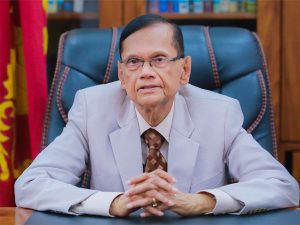 By Professor G. L. Peiris
By Professor G. L. Peiris
D. Phil. (Oxford), Ph. D. (Sri Lanka); Rhodes Scholar,Quondam Visiting Fellow of the Universities of Oxford, Cambridge and London; Former Vice-Chancellor and Emeritus Professor of Law of the University of Colombo.
Features
90th Anniversary of LSSP and leftism in Sri Lanka

The Lanka Sama Samaja Party was formed on the 18th of December 1935. Its four leaders were Dr. N. M, Perera, Dr. Coivin R, de Silva, Philip Gunewardena and Leslie Goonewardene, who also became the General Secretary. (Prior to this, in 1933, the Wellawatte Mills strike first led to their getting together in action). It must be mentioned that The LSSP was the first properly constituted political party in the country. It was also the first genuine Left party and its political philosophy was based on Marxism-Leninism. It took the name ” Sama Samaja”, which means ” Equal Society”, as, at that time, the people in Sri Lanka were unfamiliar with the terms Socialism and Communism. It was quickly accepted by the people and, despite the use of state power and thuggery against the LSSP by the local capitalist class, backed by the British rulers, the Party rapidly gained popularity among the people. In the General Election of March 1936 Dr. N. M. Perera was elected to represent the Ruwanwella electorate and Philip Gunawardena the Avissawella electorate. Unfortunately, Dr. S. A. Wickramasinghe was unable to retain Akuressa, which he had won in the 1931 Election, and Leslie Goonewardene failed to win Panadura due to the use of caste and money unfairly against him. Leslie, throughout his political career, refrained from descending to such a low level of politics But the LSSP stand helped in the process of uniting and politicisation of the people which was necessary to generate the confidence of the people in their ability to win Complete Independence through the democratic process.
Throughout its history a major role in the success of the LSSP was its provision of support to the struggles of the working class to win its rights. Dr. N. M. Perera formed the Ceylon Federation of Labour and, as its President, he organised the trade union movement to focus on winning their genuine demands as a class. He negotiated with the employers and won many demands across the table, and resorted to strike action as a last resort. He won the respect of both employees and employers as a leader who did not misuse the trade unions for personal vendettas. He used Parliament in a responsible manner to fight on behalf of the workers, while informing the public who suffered as a result of the strikes that the demands were just, and winning their support as well. The LSSP unions have maintained these values and continue to serve the working class
The LSSP was aware of the problem of poverty leading to hunger as a major factor that affected the life of a majority of our people. A survey done at the MRI, about two years ago, showed that 63% of families had an income below the poverty line. They could not have three adequate meals per day. Some had two meals and others only one that met their nutritional needs. The children and mothers were particularly vulnerable. The malnutrition level in that study was 14.3%. But the situation appears to be worse now. The Suriyamal Movement led NM to one of the worst affected areas, Kegalle. The focus was on malaria eradication, but they had to also address the problem of poverty and hunger. Rice, dhal and coconut sambol were provided. NM came to be known as “Parippu Mahaththaya” as a result. The LSSP is reviving the Suriyamal Movement which has become an urgent need after the Climate Change. Any help will be welcome.
We celebrate Independence Day alone, but India also celebrates Republic Day. It is the latter that gave India sovereignty, without which independence is empty. They won it within three years, with Ambedkar drafting the Republican Constitution. The LSSP kept on pressing for it but the comprador capitalist class, led by the UNP, kept delaying as they were happy with Dominion status. The LSSP joined the SLFP and CP to form the coalition government, led by Sirimavo Bandaranaike, in 1970, and Dr. Colvin R. de Silva was made the Minister of Constitutional Affairs. He finally drafted the Republican Constitution in 1972. Sri Lanka took 24 years to do this and we can hold our heads up as we are now politically a truly independent sovereign nation. But we remain a poor underdeveloped country with widespread unemployment and underemployment, especially among the youth. The number of those in poverty is rising while the rich are becoming super rich. The rich/poor gap is widening and it may explode. It is sad to see that Sri Lanka is far away from the Welfare State that the LSSP, led by Dr. Perera, strove to build. As Minister of Finance, he kept the cost of living down, balanced the Budget and did not tax the poor. He had a high direct tax on those who could afford to pay this. Unlike now, the priority was given to use the limited forex to buy essential medicines,not luxury vehicles.
As Minister of Science and Technology, I started the Vidatha Movement to provide the technology and finance for Small and Medium Enterprises (SMEs) countrywide, one centre headed by a science graduate in each division. I am told that more than 50,000 entrepreneurs have emerged marketing their products sustainably. More than one thousand are exporting their products. I appeal to the NPP government to continue to support them. We must develop into an industrial nation if we are to emerge from poverty. I and the LSSP will give all support. By the way, our armed forces can defend our country. We do not need American forces.
by Prof. TISSA VITARANA
(Leader and General Secretary, LSSP)
-

 Features5 days ago
Features5 days agoWhy Sri Lanka Still Has No Doppler Radar – and Who Should Be Held Accountable
-

 Features7 days ago
Features7 days agoDitwah: A Country Tested, A People United
-

 News15 hours ago
News15 hours agoPakistan hands over 200 tonnes of humanitarian aid to Lanka
-
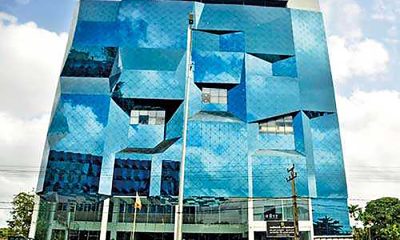
 News7 days ago
News7 days agoRs 1. 3 bn yahapalana building deal under investigation
-

 News15 hours ago
News15 hours agoPope fires broadside: ‘The Holy See won’t be a silent bystander to the grave disparities, injustices, and fundamental human rights violations’
-

 Business7 days ago
Business7 days agoFluctuating fortunes for bourse in the wake of selling pressure
-

 Opinion7 days ago
Opinion7 days agoComfort for some, death for others: The reality of climate change
-

 News7 days ago
News7 days agoFormer SAARC SG Esala Weerakoon calls for ‘South Asian Climate Compact’













